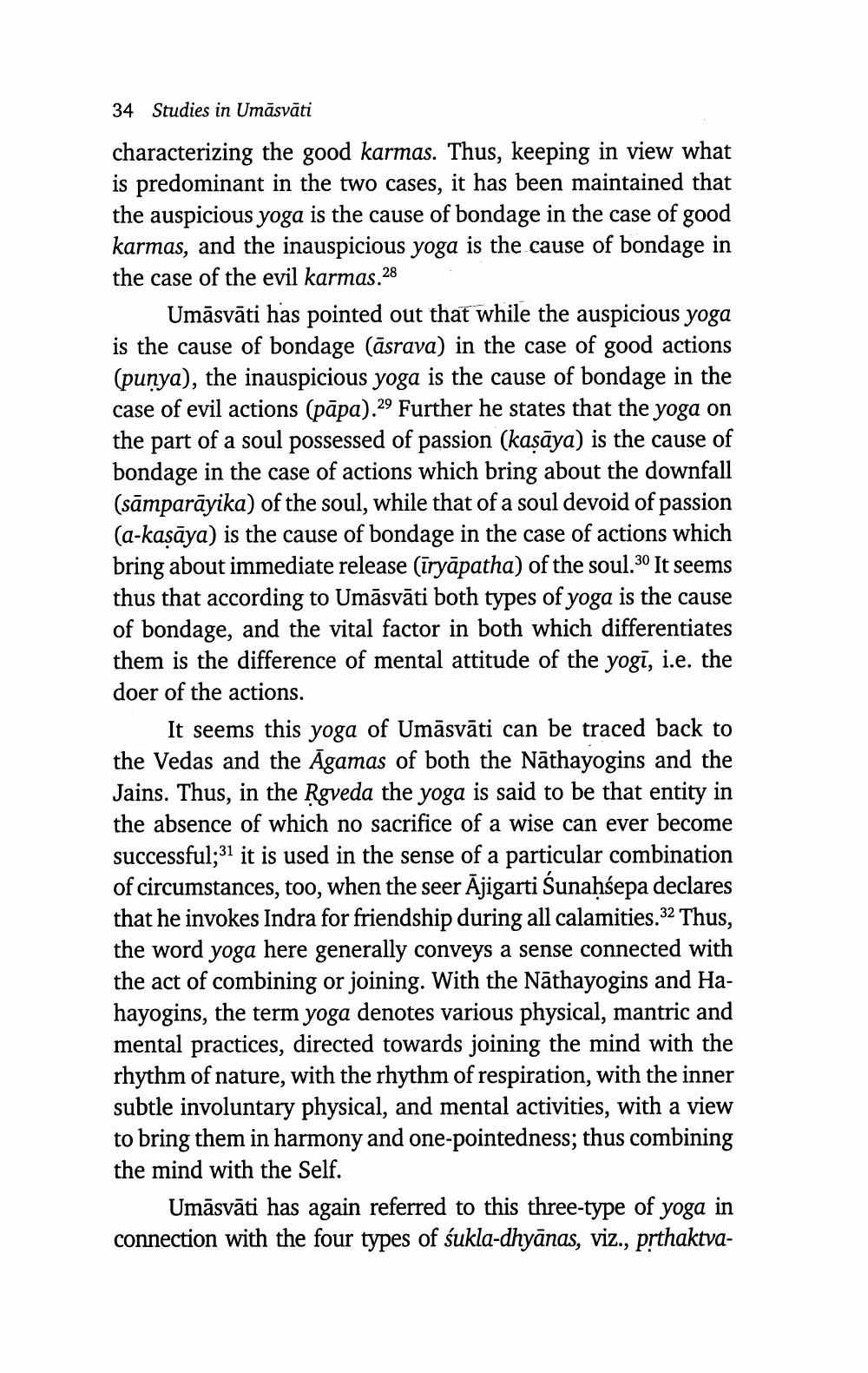________________
34 Studies in Umāsvāti characterizing the good karmas. Thus, keeping in view what is predominant in the two cases, it has been maintained that the auspicious yoga is the cause of bondage in the case of good karmas, and the inauspicious yoga is the cause of bondage in the case of the evil karmas.28
Umāsvāti has pointed out that while the auspicious yoga is the cause of bondage (āsrava) in the case of good actions (punya), the inauspicious yoga is the cause of bondage in the case of evil actions (pāpa).29 Further he states that the yoga on the part of a soul possessed of passion (kaņāya) is the cause of bondage in the case of actions which bring about the downfall (sāmparāyika) of the soul, while that of a soul devoid of passion (a-kasāya) is the cause of bondage in the case of actions which bring about immediate release (īryāpatha) of the soul.30 It seems thus that according to Umāsvāti both types of yoga is the cause of bondage, and the vital factor in both which differentiates them is the difference of mental attitude of the yogī, i.e. the doer of the actions.
It seems this yoga of Umāsvāti can be traced back to the Vedas and the Āgamas of both the Nāthayogins and the Jains. Thus, in the Ķgveda the yoga is said to be that entity in the absence of which no sacrifice of a wise can ever become successful; 31 it is used in the sense of a particular combination of circumstances, too, when the seer Ājigarti Sunaḥśepa declares that he invokes Indra for friendship during all calamities.32 Thus, the word yoga here generally conveys a sense connected with the act of combining or joining. With the Nāthayogins and Hahayogins, the term yoga denotes various physical, mantric and mental practices, directed towards joining the mind with the rhythm of nature, with the rhythm of respiration, with the inner subtle involuntary physical, and mental activities, with a view to bring them in harmony and one-pointedness; thus combining the mind with the Self.
Umāsvāti has again referred to this three-type of yoga in connection with the four types of śukla-dhyānas, viz., prthaktva




